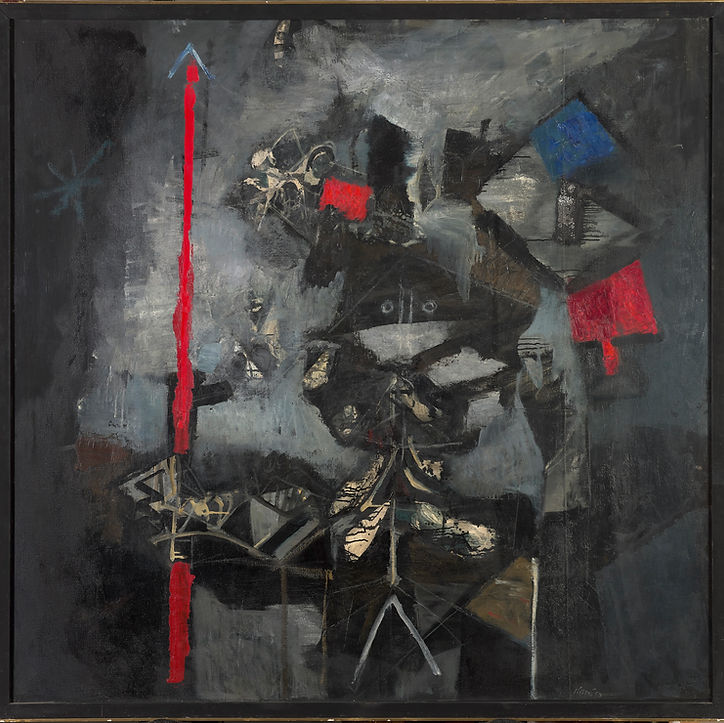PARIS
Antoni Clavé moved to Paris on 5 April 1939, the day he turned 26. Like all Spanish exiles arriving in the French capital, Clavé met Pablo Picasso. Their friendship grew stronger during the war, and the bond they formed is evident in the works Clavé produced at that time.
During the Second World War and the immediate post-war period, his solo and group exhibitions with the ‘Espagnols de l'école de Paris’ did not yet allow him to make a living from his painting. His work as an engraver and later as a set and costume designer for theatre and ballet provided him with an income. In 1949, he achieved fame with Carmen, created by Roland Petit at the Prince of Wales Theatre in London and later at the Théâtre Marigny in Paris. Clavé knew that his recognition as a painter had to be emancipated from his work as a decorator.
In 1955, his work as an illustrator for François Rabelais' bibliophile book Gargantua profoundly renewed the iconography of his painting by introducing the theme of the Rois, which would bring him notoriety among collectors and the general public. They are sonic totems carrying flowers or birds as sceptres, or smoking pipes. The Guerriers also began to invade his canvases. They come from Rabelais' story, but are also directly linked to his experience during the Spanish Civil War.
In April 1956, the Sala Gaspar in Barcelona organised his first exhibition in Spain. Clavé's career gained international recognition in 1957, thanks to an exhibition of his work at the Beyeler Gallery in Basel. Finally, in 1958, the Creuzevault Gallery in Paris organised his first major exhibition.
Thanks to the success of his exhibitions, Antoni Clavé was now able to work with large formats and also free himself from figuration. Some ‘Guerriers’ reveal a new form and material. The composition of coloured geometric shapes and sketched silhouettes was followed by the integration of different elements constituting the theme: pigments, collages and even old carpets used as a support from 1957 onwards. Whatever the motif – king, warrior or still life – the essential element lies in the interweaving of materials on the canvas, which form the image in the viewer's retina.

Guerrier noir, 1958. © Antoni Clavé, VEGAP, Barcelona, 2025

